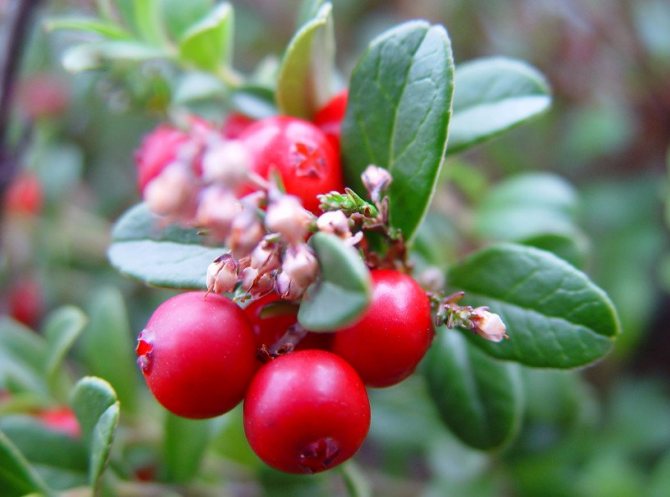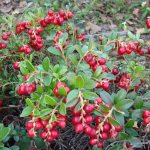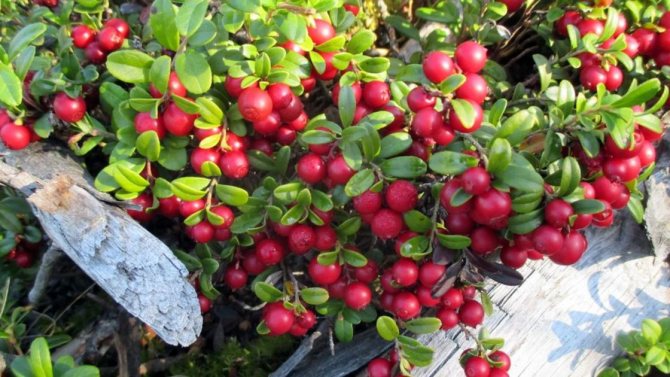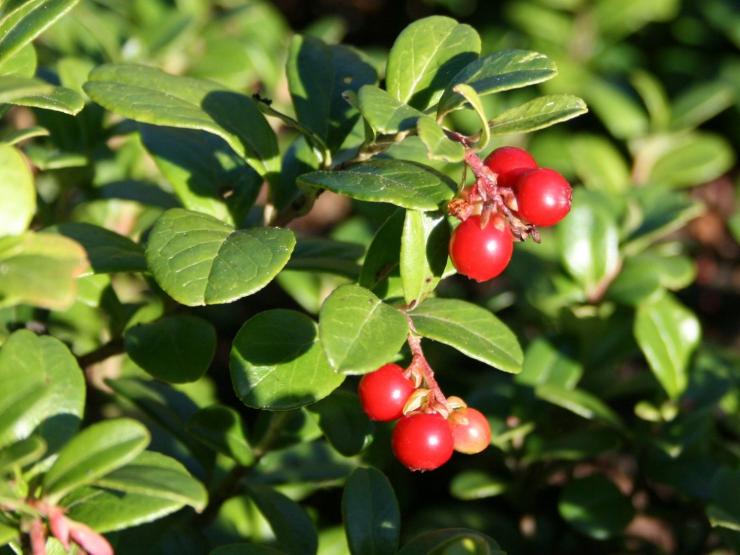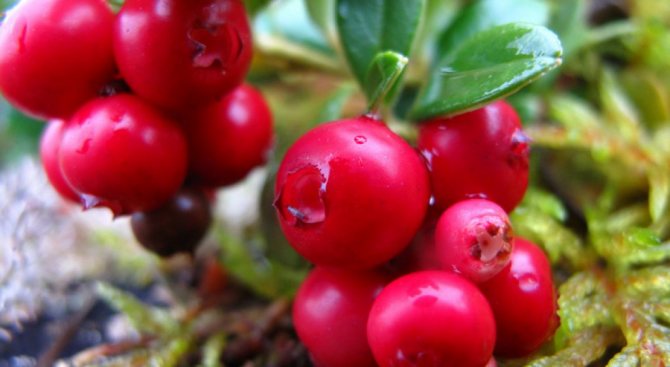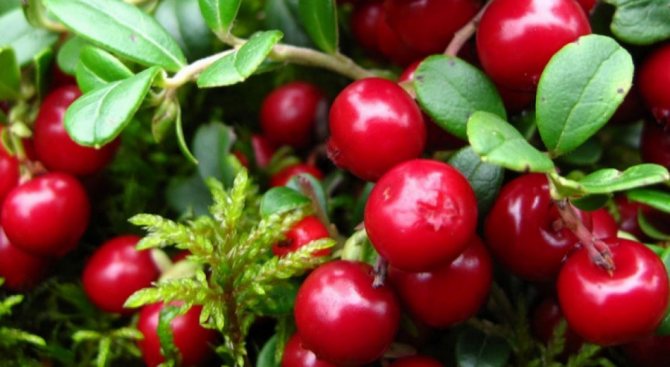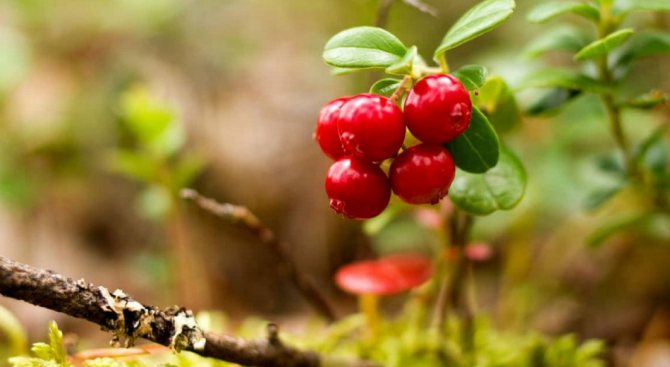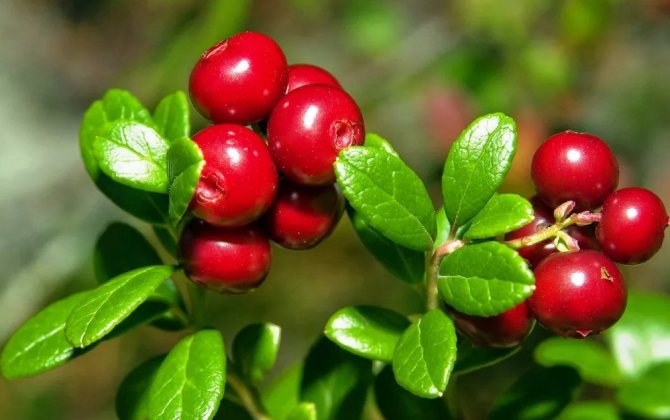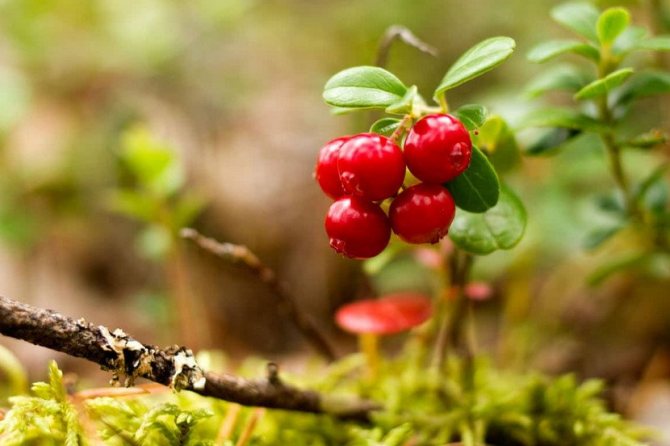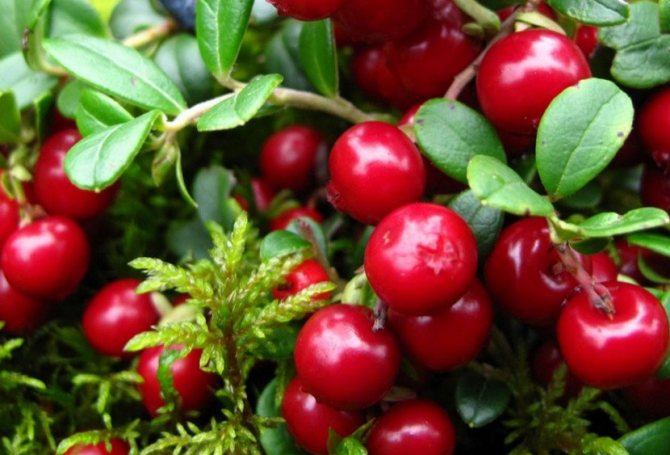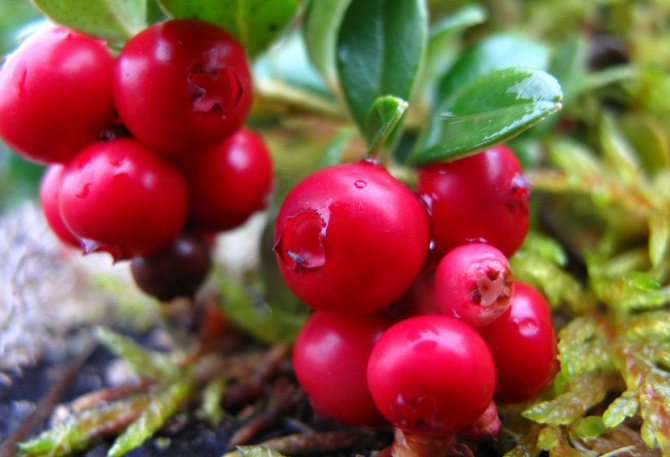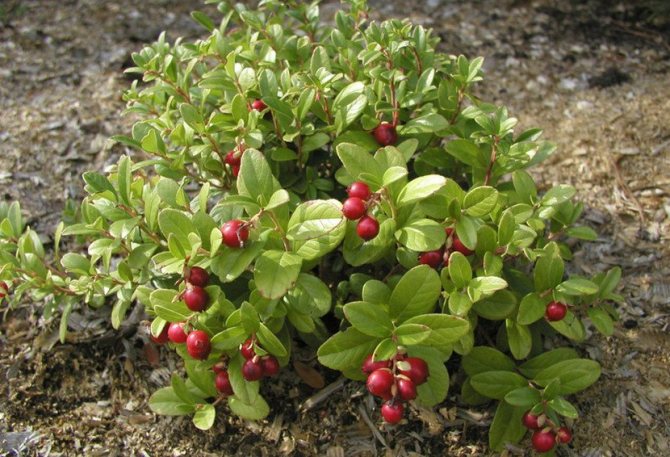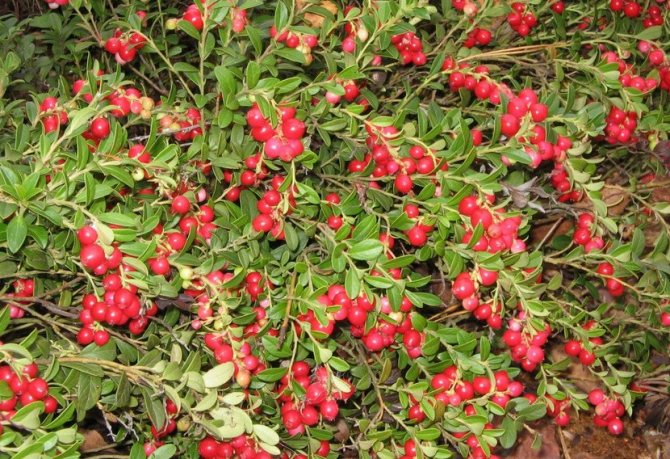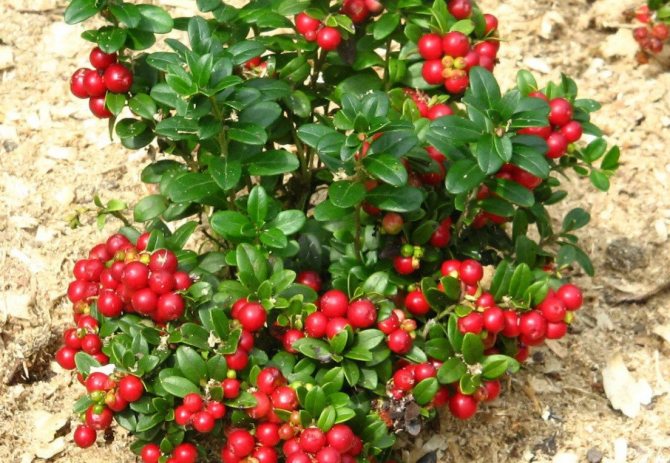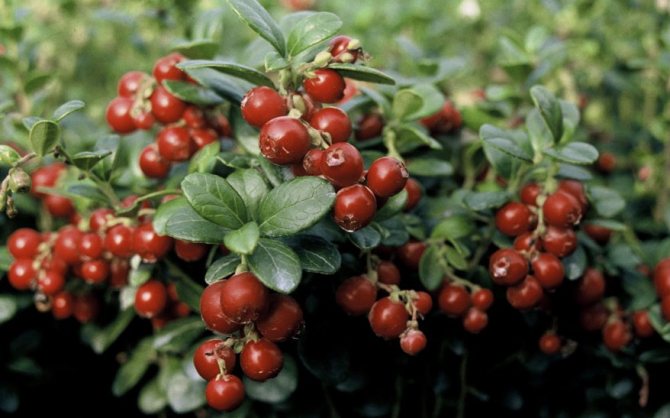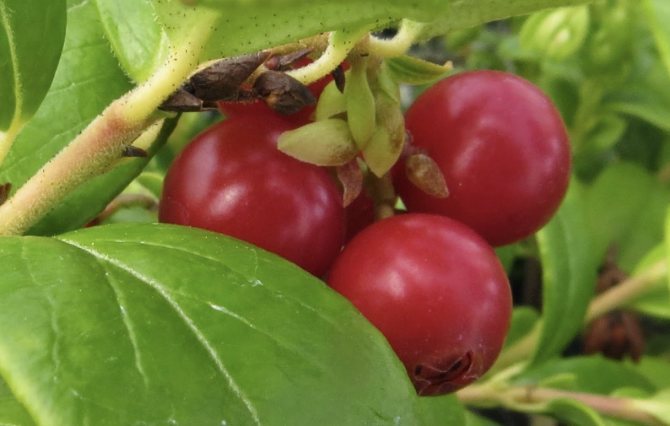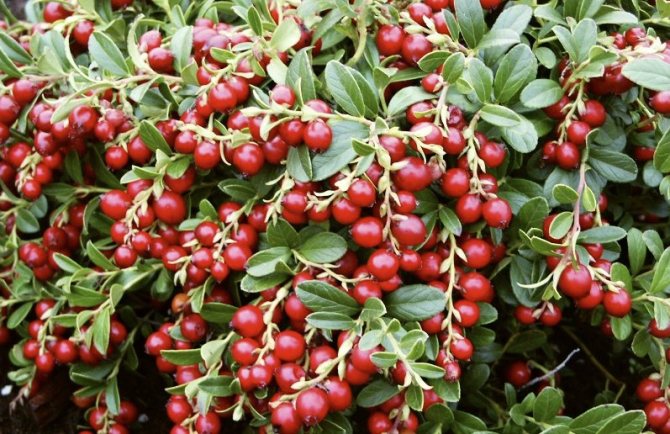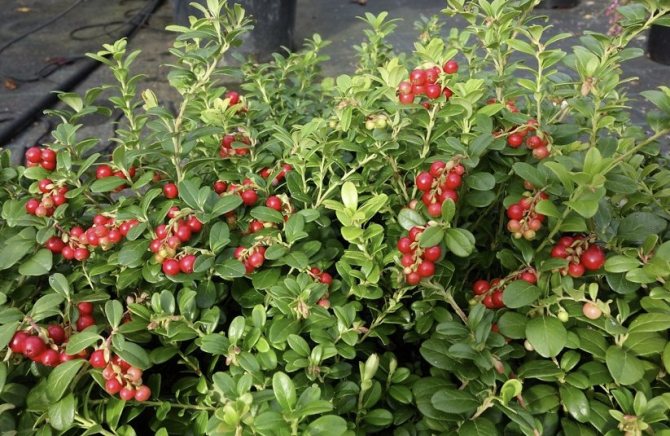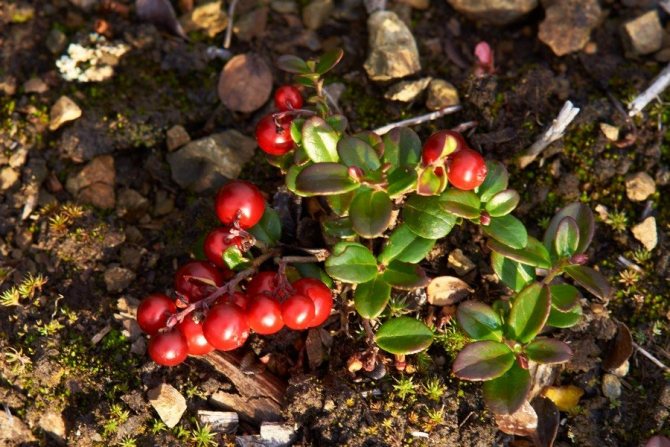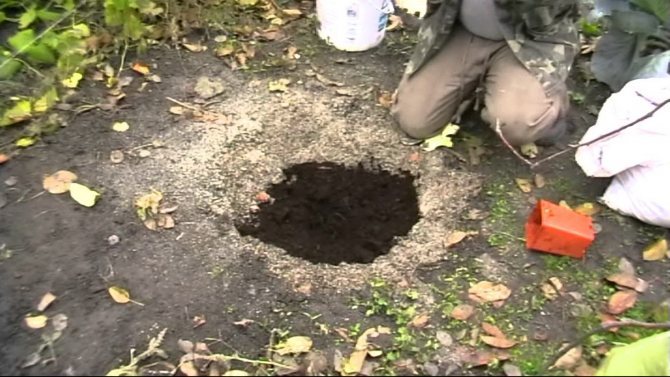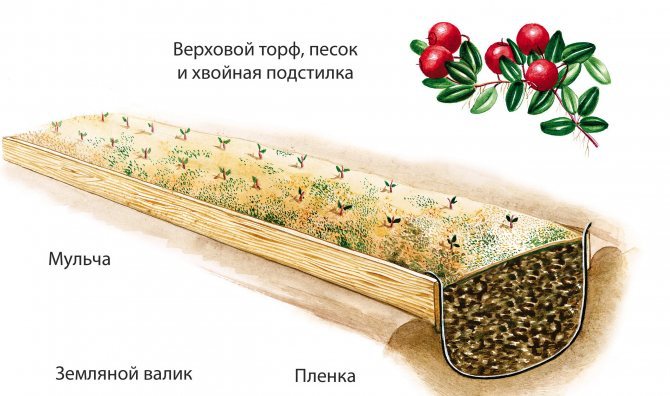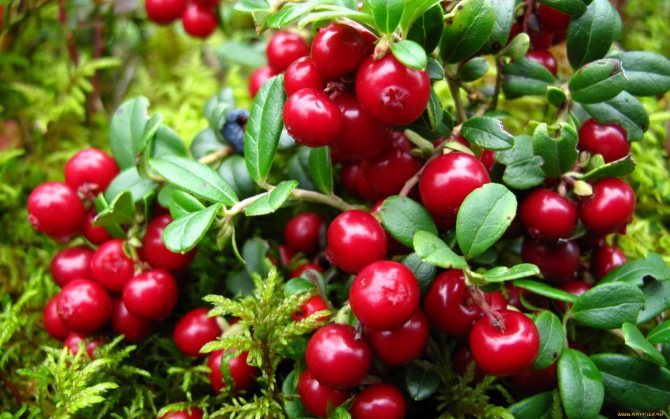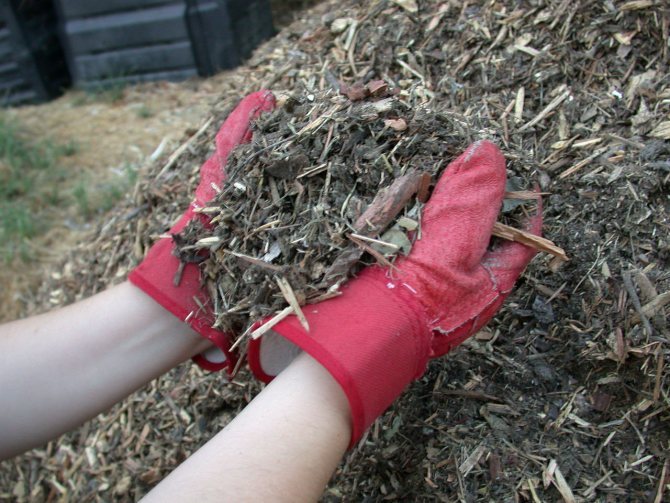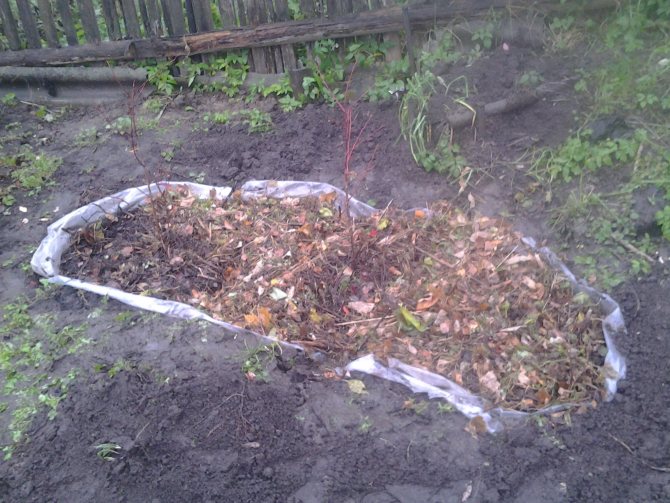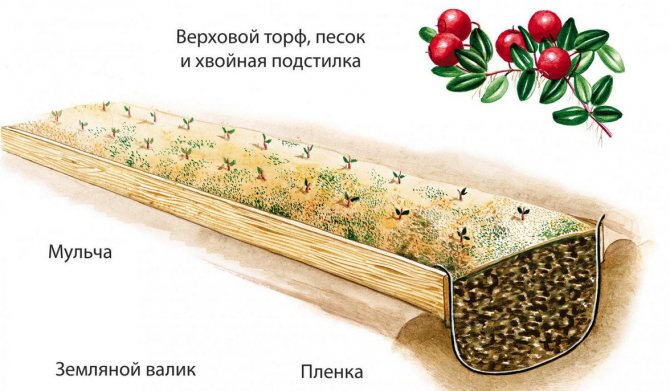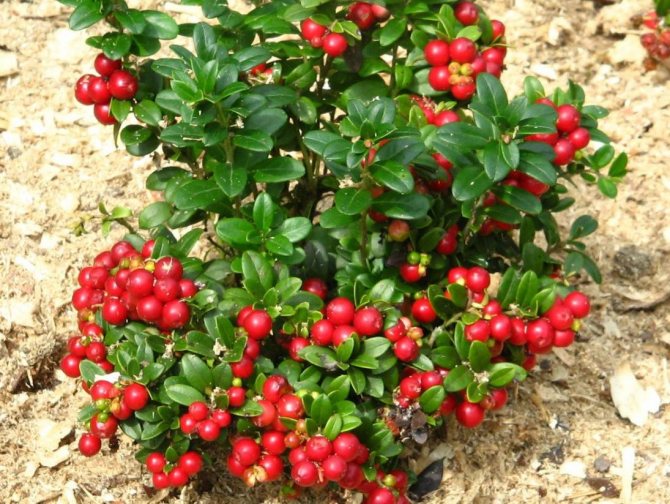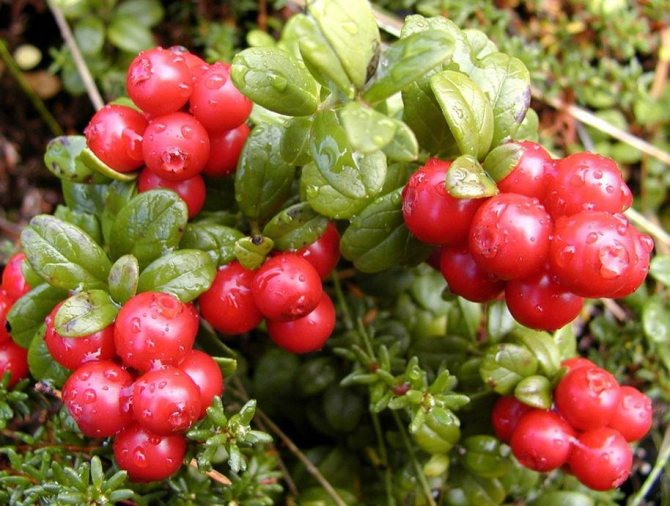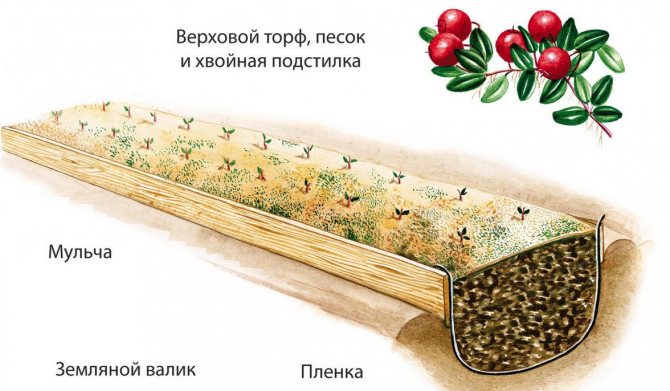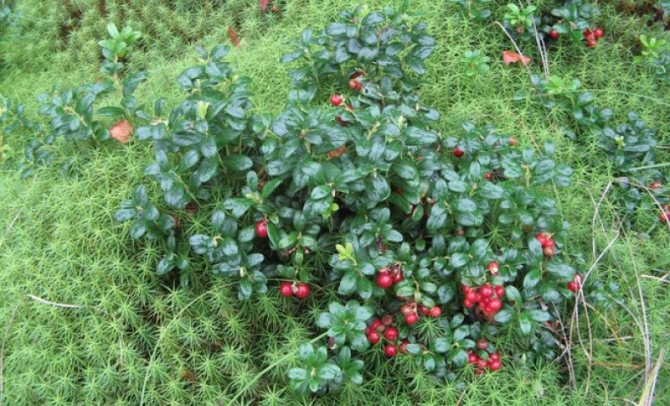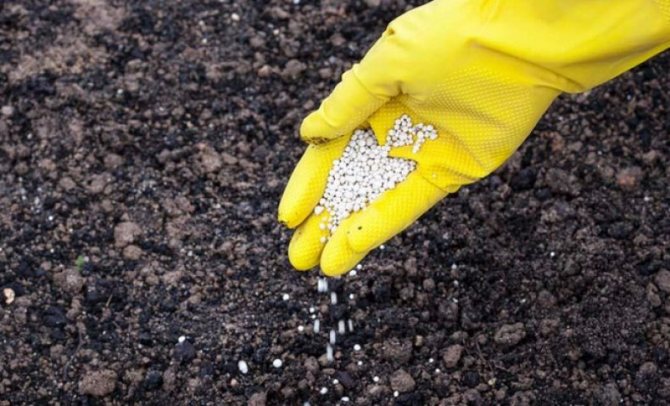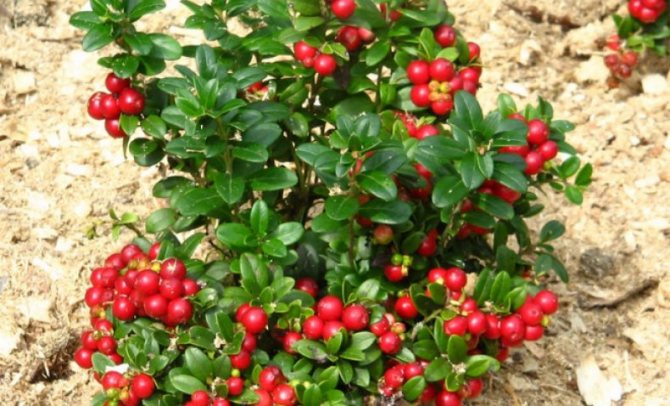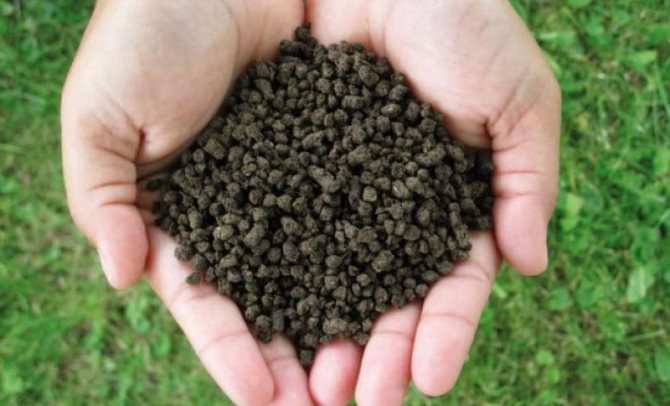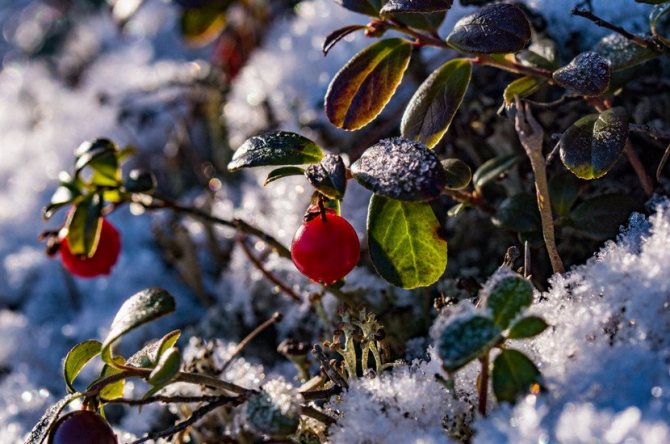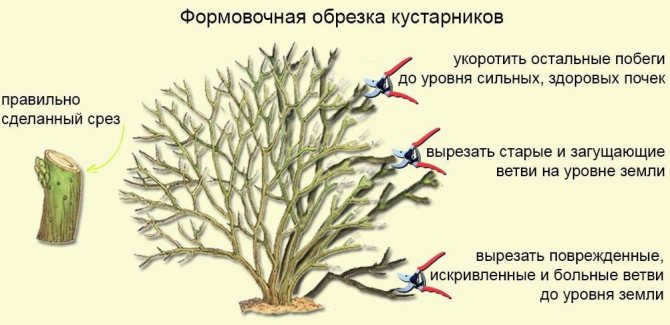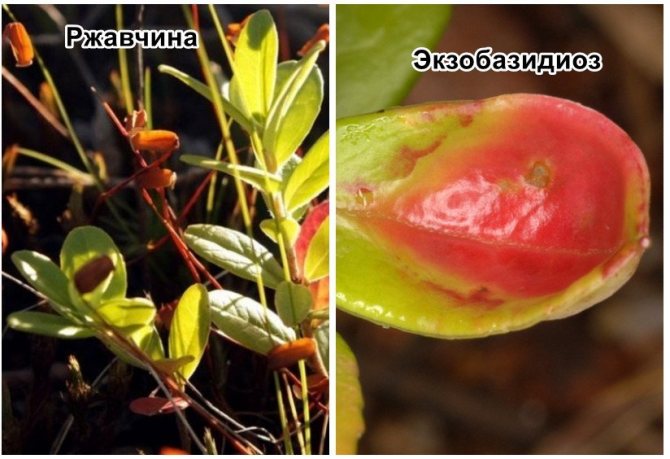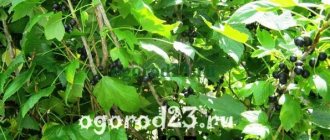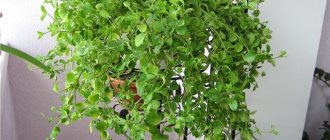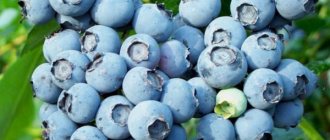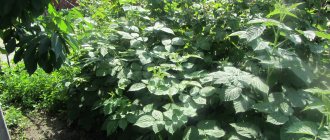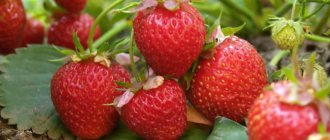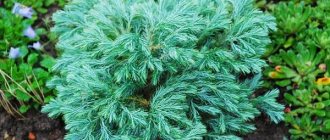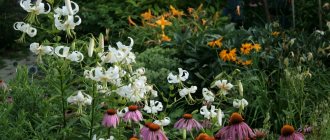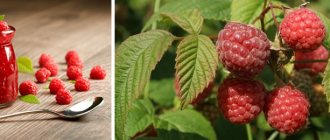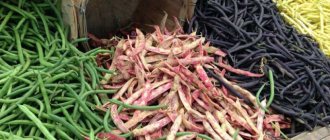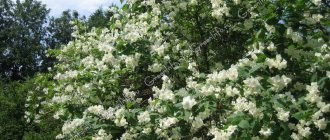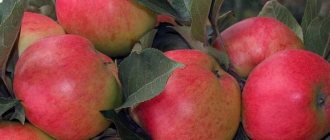"Coral"
The variety is a shrub, the height of which is about 30 cm, the diameter of the crown is the same. It grows in damp coniferous and deciduous forest plantations, peat bogs are a good place for growth.
Important! Avoid drying out the soil - regularly water abundantly. If the ground is dry, the plant may die, since in its natural environment it is accustomed to constantly being in moist soil (in swamps, in the taiga).
Coral lingonberry fruits have a deep red color and look attractive in green foliage. They are food for birds and animals. Birds are able to spread lingonberries by transferring undigested seeds.
Inflorescences are represented by white flowers with a pink tint of regular shape. Flowering occurs between May and June. Lingonberries can be planted even in sour, marginal soils... Among the most suitable substrates are peat and sand. Lingonberry variety "Coral", grown under human supervision, has a good yield: during the season, you can collect 60 kg of fruits from 1 are.
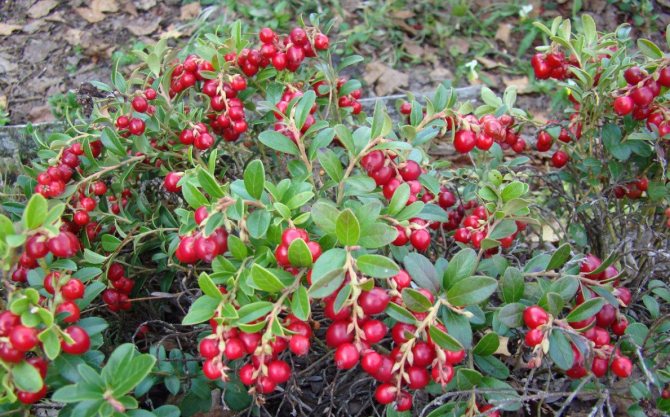
Output
Growing lingonberries in a summer cottage is not particularly difficult. The main thing to do is to prepare the soil so that it matches the soil in which this berry grows in its natural environment. The most important condition is that it must be acidic enough. It is also worth paying attention to the landing site - it should be well lit and not waterlogged.
The soil should be well breathable, not dense, so it should be loosened regularly. In addition, you will periodically need to prune old branches and thin out the plantings. In dry weather, additional spraying of the leaves is required. As a rule, it is not necessary to cover lingonberries for the winter.
You should also pay attention to the fight against diseases and harmful insects. However, you should not overdo it with chemicals. The same can be said about watering and fertilizing - everything should be in moderation.
"Sanna"
The homeland of the variety is Switzerland, it has a good yield: one bush can give up to 300 g of fruit. Lingonberry grows quite rapidly, for this reason it is often used to create beautiful landscape compositions. The height of the shrubs varies from 15 to 30 cm. They are characterized by branchiness, splendor, and grow among the thick of evergreen leaves.
You can collect about 6 berries from one brush. They have a smooth coral-red glossy skin. The fruits have a sweet and sour taste. The mass of one lingonberry is approximately 0.4 g.
Lingonberry variety "Sanna" It does not require special care... It can grow well in shade or near larger bushes. It has good winter hardiness and is not susceptible to disease.
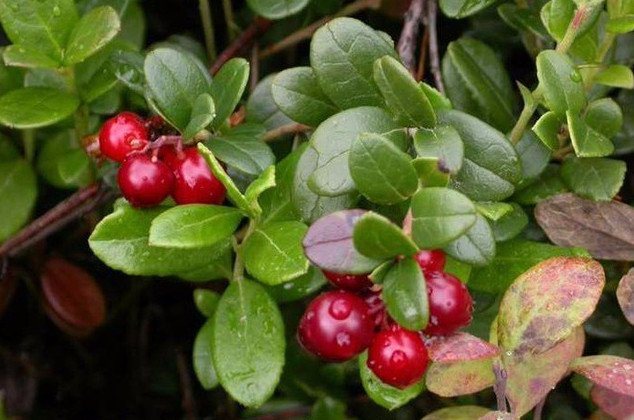

"Red Pearl"
"Red Pearl" belongs to the early varieties of lingonberry, its homeland is Holland. The height of the bushes reaches 30 cm, they have a wide, spreading crown. The variety has large, dark green, rounded leaves.
Lingonberry fruits are large enough, up to 12 mm in diameter. They have a round shape, burgundy color. They stand out for their sweet and sour taste with a slight bitterness. The variety can give 2 harvests per season. Frost resistant and is able to withstand temperatures down to –25 ° С.
Fans of delicious berries will be interested to learn how the princess, blueberries, blueberries, cloudberries, goji, gooseberries, currants, and cranberries are grown.
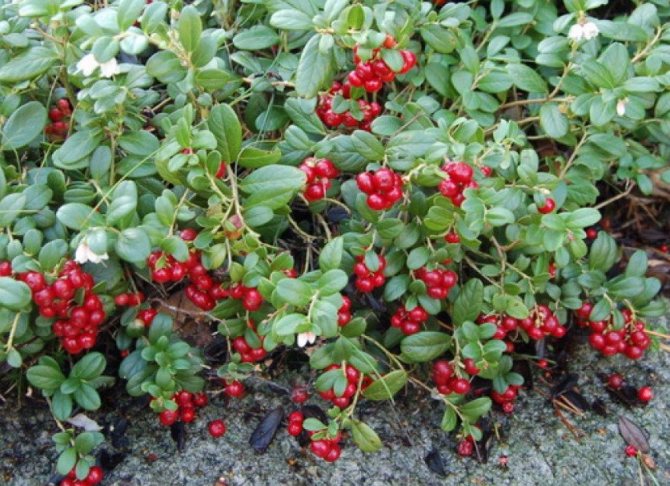

Harvesting and storage
Lingonberry leaves can be collected only before flowering (April-May), and only those leaves that have survived the winter should be selected. Young leaves are not suitable for drying, they will turn black. Or, harvesting the leaves can be postponed until autumn, when the flowering ends. Only after 5-10 years can the next collection of leaves be carried out. The leaves should be spread out in a thin layer and dried in a dark, well-ventilated area, stirring occasionally. Correctly dried leaves do not turn black, but retain their green color.
The berries are picked well-ripe, remove any debris, wash. Further, they use many methods of storage in the winter. Dried, boiled preserves and jams, frozen in the freezer. All vitamins are preserved when frozen. But it is worth remembering that when freezing, it is important to use sealed bags, otherwise extraneous odors will pass to the berries.
Delicious jams and preserves come out of lingonberries. Lingonberry sauce is also made from it, which is served with meat dishes. Thanks to it, the taste of the dish is enhanced, as well as the digestibility is improved.
So, lingonberry, the cultivation of which is quite an easy task, is a very valuable plant. This shrub is not only a good decoration for your garden, but also a storehouse of vitamins that will help you stay healthy.
"Ruby"
"Rubin" refers to late-ripening varieties of lingonberry. It is represented by an evergreen ground cover shrub, the height of which is 15–30 cm. It has small smooth elliptical leaves painted in dark green color. The inflorescences are pale pink in color, similar to small bells.
Did you know? Lingonberry belongs to long-livers - its life span is more than 300 years. According to this parameter, the plant is not inferior even to oaks.
Flowering occurs in May and June. Fruiting falls in late August - early September. Rubin berries have a rounded shape, when ripe they acquire a dark red color. They shine well in the light, have a sweet and sour taste. The mass of one lingonberry is approximately 0.25 g.
"Ruby" refers to light-loving plants, it is better to plant the variety in acidic well-drained soil. After planting, the first harvests can be obtained after 4 years. Berries have a rich chemical composition, therefore they are often used in the preparation of infusions and decoctions.
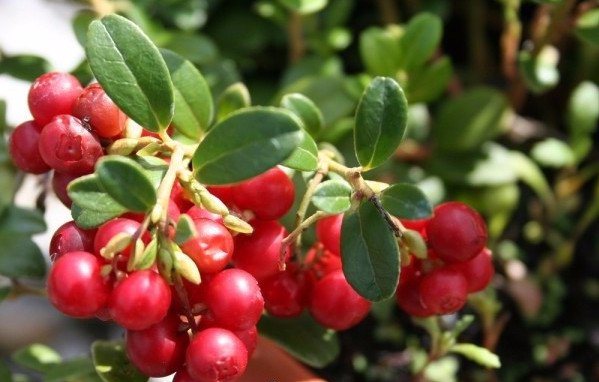

Harvesting and harvesting
Lingonberry is widely used in the treatment of many diseases. Lingonberry leaves and fruits relieve inflammation of the bladder and are indicated for various inflammations of the kidneys. They also have antipyretic effects.
Leaves are harvested only in early spring from under the snow, before buds appear. Harvesting is possible in October. In summer, the prepared raw materials are not suitable for medical purposes, the leaves turn black when dried.
Pinch the leaves from the bush without breaking off the shoots, so as not to injure the bush. Re-collection of leaves can be done no earlier than 5-10 years, after the plant is fully restored.
Select blackened and injured leaves before putting to dry. Spread the fabric and in a dark, warm place, spread the leaves on it in a thin layer.
The berries ripen from the end of July to the beginning of frost, depending on the variety and area. The collected berries can be dried, frozen, soaked, made fruit drinks and jams.
The recipe, tried more than once on my grandmother: boil 60 g of leaves in 3 glasses of water in an enamel bowl for 10 minutes. After cooling, strain and drink 3 divided doses per day. This broth is good for the liver and kidneys.
Ammerland
It is represented by low spherical bushes no more than 30 cm high. Their foliage is emerald green. "Ammerland" has a high level of productivity: 300 g of fruits with a sweet and sour taste are harvested from one bush. They are light red in color and large (1.1 cm in diameter). Fruiting occurs twice per season: in July and early September.
Well-lit lawns, which are away from large trees that provide shade, are suitable for planting. The above-ground part of the bushes grows rather quickly, resulting in beautiful compact bushes.
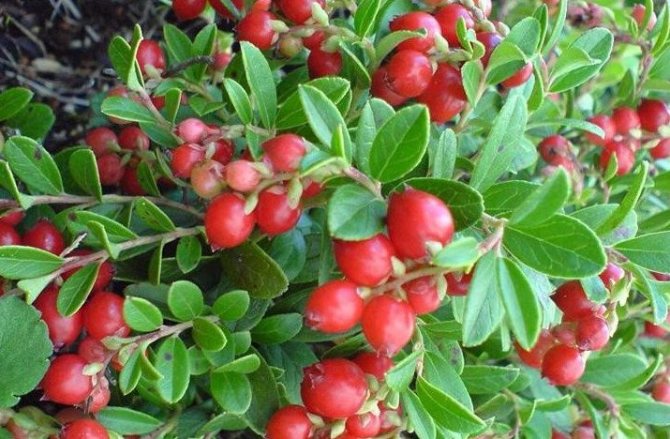

Planting a plant
First of all, the area must be leveled so that there are no pits and depressions.


The fact is that if water stagnates in them during frosts in late autumn, this can lead to damage to the peduncles or, in the worst case, to the death of the plant.
Landing dates
The most suitable season for planting lingonberries is spring. In summer and autumn, survival rate is much lower.
Technology and circuit
To plant individual lingonberry shrubs, use the tape method. The width of the tape is 80 cm. The row spacing is 40 cm. Lingonberry grows quite quickly and fills the maximum free space, so sometimes it is necessary to thin it out. Planting 1-3 year old seedlings is in the grooves of 7-8 cm.The distance between the bushes is 30 cm.
"Mazovia"
The variety was obtained as a result of the work of Polish breeders from a wild bush. It belongs to evergreen, there is always foliage on the bush. The height of the plant is about 30 cm. The fruits are quite small, the weight of one cowberry is only 0.25 g. The variety has a low yield. - only 40 g of fruits are harvested from one shrub.
Important! Make sure to regularly weed and remove weeds around the base of the bush. They take away the nutrients necessary for the plant, as a result of which the fruits grow small.
However, despite the nondescriptness, the berries have a pleasant sweet and sour taste. Fruiting occurs around mid-autumn. The fruits are burgundy.
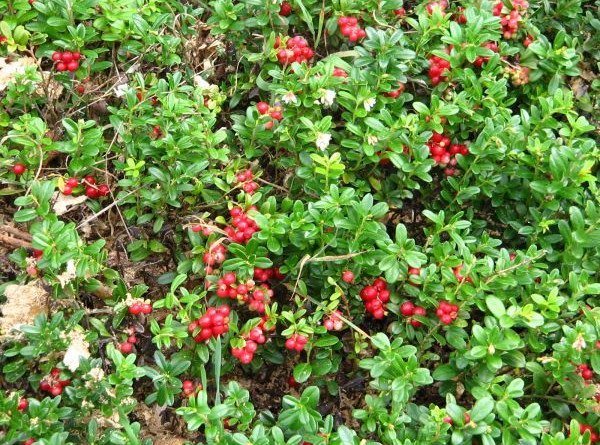

"Linnaeus"
Bred by Swedish scientists, named after a famous breeder. It is represented by vigorous bushes with a strong main shoot and underdeveloped peripheral ones. Plant height is 25 cm. The foliage is quite large. Flowering begins early, sometimes repeating in the fall.
The fruiting period falls in the second half of the summer. The fruits of the variety have a size of about 0.45 cm. They are painted in bright scarlet color, have a sweet and sour taste with bitterness. The yield of one bush at the age of 3 years is 150 g of berries per season. Lingonberry "Linnaeus" resistant to frost. In the absence of snow, it can survive frosts down to –15 ° С. It is recommended to plant the plant in acidic peat soil with good drainage.
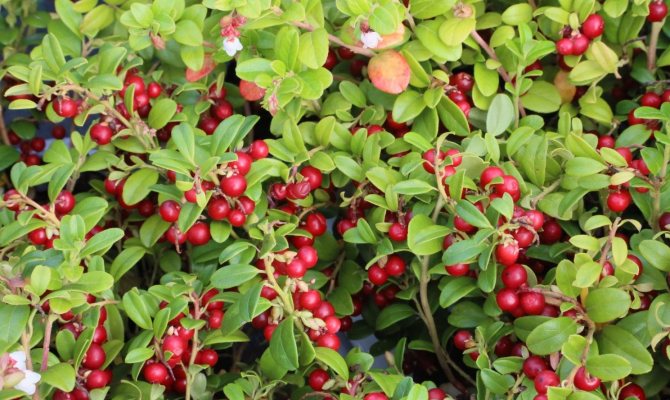

Combination of lingonberry with other horticultural crops
Low-growing evergreen lingonberry, as you can see in the photo, looks especially colorful on alpine hills and as a framing of paths. In the spring, immediately after the snow melts, she will refresh the garden with bright greenery. Dark junipers and other conifers, as well as tall heathers, look spectacular on the lingonberry carpet, abundantly decorated with scarlet drops of berries. Compositions of romantic wooden benches and narrow curved ridges with fruiting lingonberries are magnificent.
This plant is still gaining popularity among gardeners, therefore, it is currently able not only to revive the lowland corners of the garden and serve as a source of culinary inspiration, but also to surprise neighbors and relatives with its unexpected presence in a country estate.
"Kostromichka"
Refers to early ripening varieties of lingonberry. It is represented by a vigorous, compressed bush with medium green shoots. One fruit cluster contains about 7 berries. Fruits of medium size and weight (0.28 g) have a rounded shape, are colored in burgundy color, taste - sweet and sour, have no aroma.The plant has good frost resistance and can withstand cold temperatures down to –15 ° C.
Did you know? According to one legend, one kind swallow wanted to give immortality to humanity, so it took living water into its beak and set off on a journey to irrigate people with it. But in flight, she was stung by a wasp that did not wish people well. The swallow dropped a drop of water as she cried out in pain. The water did not hit the people, but it irrigated the lingonberries. So the plant became evergreen.
The height of the shrub is 14-19 cm, fruiting occurs in mid-August.
Productivity - 0.95-2.4 kg / sq. m.
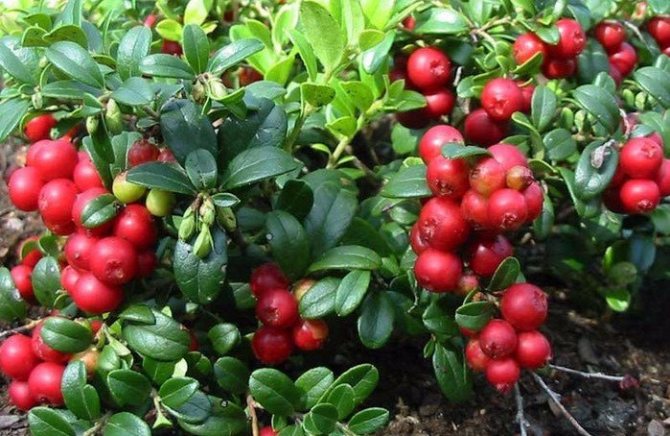

How to care for lingonberries in the country
Timely and correct watering
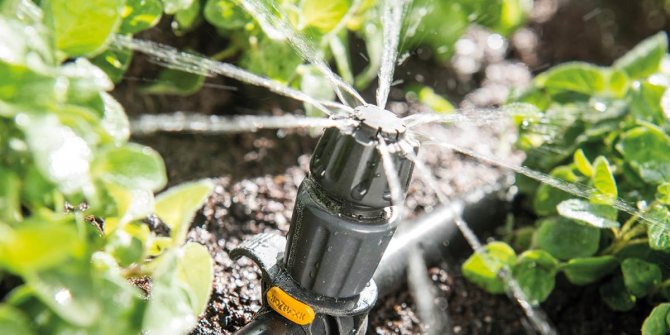

Use drip irrigation for lingonberries. Photo:
The shrub does not like an abundance of moisture and at the same time drought. Watering should be carried out 2 times a week, no more than 10 liters of water per 1 sq. m. You can apply drip irrigation in the form of sprinkling.
Weeding, loosening and feeding cranberry beds
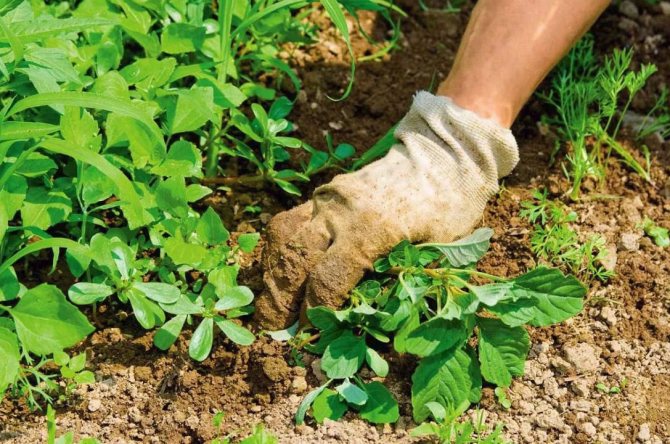

Weeding of weeds around lingonberries should be done regularly. Photo:
Timely weed weeds near lingonberries, loosen the soil and apply mulch in the form of sand or peat. It is often not necessary to feed lingonberries; it is carried out every 2 years in spring or autumn. Lingonberry loves acidic soil, it can be acidified with citric acid every 3 years.
Shrub pruning
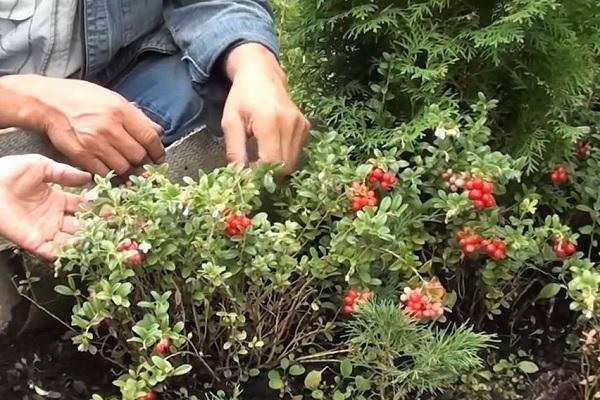

Pruning the branches of the shrub is used for reproduction. Photo:
The shrub is pruned only at 7 years after planting. Pruning will rejuvenate and increase the yield of the shrub. Cut branches can be used for breeding lingonberries.
Erntsegen
Erntsegen is the largest-fruited variety. The diameter of the fruits is 1–1.5 cm. The height of the bushes can reach 40 cm, they have flexible long shoots, long large leaves. The berries are light red and have a pleasant taste. They are often used to make jam, make jams, marmalade and other delicacies.
It has a good yield: 200 g of berries are harvested from one shrub. But in most cases, this variety is used to create beautiful landscape compositions.
